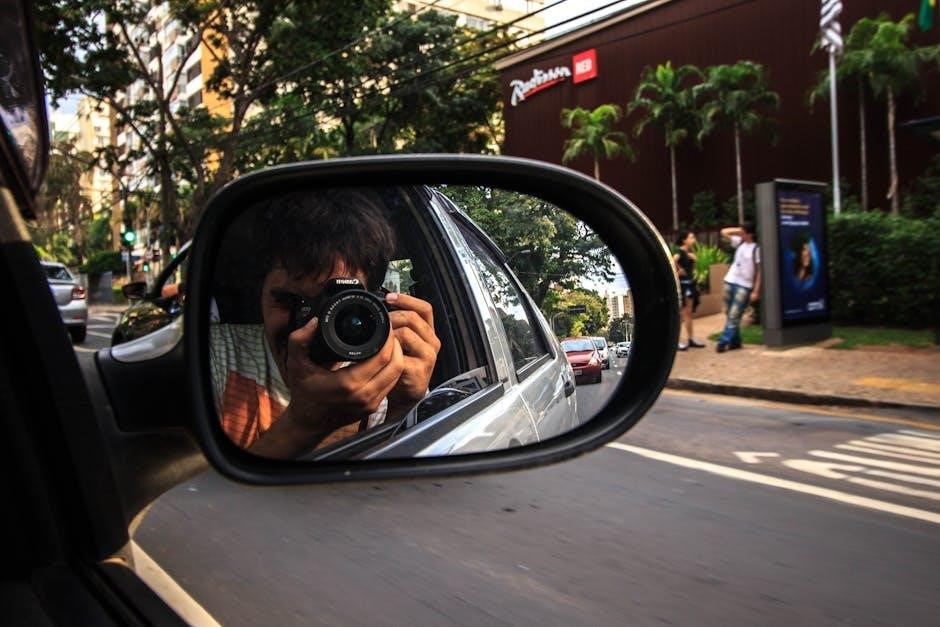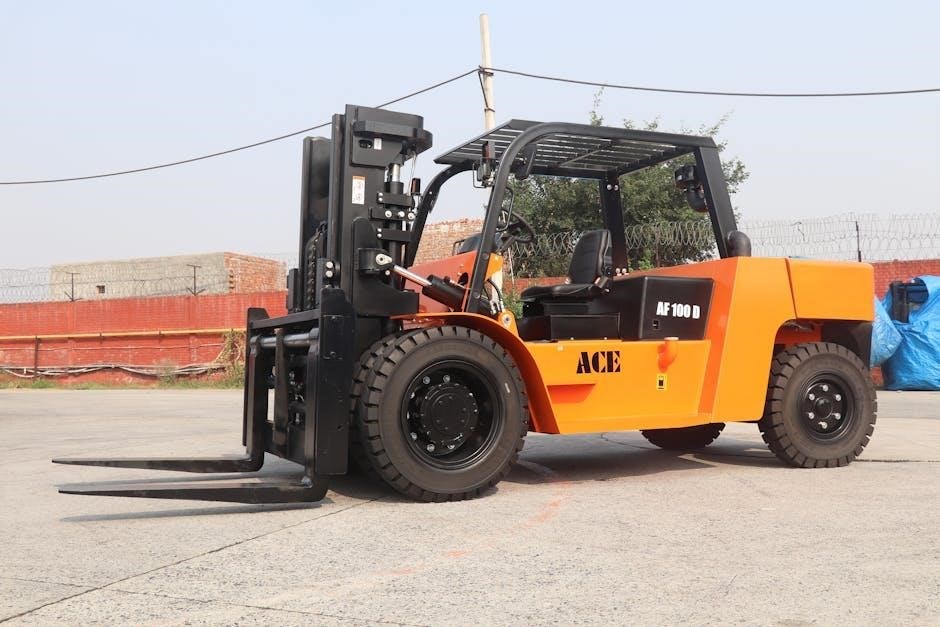A Matchbox cars price guide with pictures provides detailed valuations‚ helping collectors assess their toys’ worth based on rarity‚ condition‚ and original packaging‚ with visual references included.
1.1 Overview of Matchbox Cars History
Matchbox cars‚ introduced by Lesney Products in 1953‚ began with the iconic Road Roller. Over decades‚ they became a global phenomenon‚ offering detailed miniature vehicles. Now owned by Mattel‚ the brand remains beloved for its diverse models and historical significance‚ inspiring collectors worldwide with their evolution and enduring appeal.
1.2 Importance of a Price Guide with Pictures
A price guide with pictures is essential for accurate valuations‚ offering a comprehensive visual record of Matchbox cars. It helps identify rare models‚ understand market trends‚ and assess condition‚ ensuring collectors make informed decisions when buying or selling their toys.
Factors Affecting the Value of Matchbox Cars
The value of Matchbox cars is influenced by rarity‚ condition‚ and original packaging. High-quality images aid in evaluating these elements‚ ensuring accurate appraisals and fair market pricing.
2.1 Rarity and Limited Edition Models
Rarity significantly impacts Matchbox car values‚ with limited editions and hard-to-find models commanding higher prices. Models like the 1969 Volkswagen Beach Bomb and 1967 Mercury Station Wagon are highly sought after‚ especially with original packaging‚ making them rare and valuable collector’s items.
2.2 Condition of the Vehicle
The condition of a Matchbox car greatly influences its value. Mint-condition models with original paint‚ no scratches‚ and intact chrome parts are highly prized. Even minor flaws‚ such as paint chips or missing accessories‚ can significantly reduce a car’s worth‚ emphasizing the importance of preservation for maintaining value.
2.3 Original Packaging and Accessories
Original packaging and accessories significantly impact a Matchbox car’s value. Mint-condition boxes‚ instruction sheets‚ and included parts enhance worth. Even minor missing accessories can reduce value‚ emphasizing the importance of preserving these elements for optimal market appeal and historical authenticity.
2.4 Production Year and Model Series
The production year and model series greatly influence a Matchbox car’s value. Earlier models‚ such as those from the 1950s and 1960s‚ often command higher prices due to rarity. Specific series‚ like the popular ‘1-75’ line‚ are highly sought after by collectors‚ making them more valuable. Detailed guides help identify these factors.
Rare and Most Valuable Matchbox Cars
Rare Matchbox cars‚ such as the 1953 Road Roller and 1969 Ferrari 308‚ are highly sought after by collectors. Their uniqueness and historical significance drive their high value.
3.1 The 20 Rarest Matchbox Cars
The 20 rarest Matchbox cars include models like the 1953 Road Roller and 1969 Ferrari 308. These cars are highly sought after due to their limited production runs and historical significance‚ making them valuable additions to any collection‚ as verified by sales data and collector insights.
3.2 Verified Sales Data and Market Trends
Verified sales data reveals market trends‚ showing rare Matchbox cars like the 1953 Road Roller selling for thousands. Trends indicate rising values for models in mint condition with original packaging‚ influenced by collector demand and economic factors‚ providing insights for buyers and sellers in the collectible toy car market.
3.4 Picture Gallery of Rare Models
A curated picture gallery showcases rare Matchbox models‚ such as the 1953 Road Roller and Ferrari 308‚ with high-quality images highlighting details like color variations and packaging. These visuals aid collectors in identifying rare editions and understanding their value‚ making them essential for accurate appraisals and market research.

How to Identify Matchbox Car Variations
Identifying Matchbox car variations involves examining color schemes‚ model numbers‚ and production details. Detailed descriptions and photos help distinguish rare or unique models from standard releases accurately.
4.1 Color and Model Identification
Identifying Matchbox cars involves analyzing color schemes‚ finishes‚ and specific model details. Colors like metallic red or matte black can signify rarity. Detailed photos and descriptions help distinguish variations‚ ensuring accurate identification and valuation of each model based on its unique characteristics and production specifics.
4.2 Decoding Model Numbers and Suffixes
Model numbers and suffixes are crucial for identifying Matchbox cars. For example‚ “19e” denotes a specific Road Dragster variant. Suffixes like “A” or “B” indicate production runs or color changes. Decoding these helps determine rarity‚ production year‚ and series‚ aiding collectors in accurate valuation and identification of unique models.
4.3 Detailed Descriptions and Photos
Detailed descriptions and high-quality photos are essential for identifying Matchbox car variations. They highlight specific features‚ such as color accuracy‚ model differences‚ and packaging details. These visuals and explanations help collectors and appraisers determine authenticity and condition‚ ensuring accurate valuations and informed purchasing decisions.
Matchbox Cars Price Guide Resources
Matchbox cars price guides offer comprehensive resources‚ including printed catalogs with detailed photos and online marketplaces for real-time pricing and sales data‚ aiding collectors in accurate valuations.
5.1 Printed Price Guides and Catalogs
Printed price guides like Tom Larson’s Warman’s Matchbox Field Guide and The Definitive Guide To Matchbox Toys offer detailed descriptions‚ color photos‚ and model variations. These catalogs cover production years‚ rare models‚ and pricing‚ aiding collectors in making informed decisions‚ though values may become outdated over time.
5.2 Online Price Guides and Marketplaces
Online platforms like eBay‚ specialized forums‚ and collector communities offer dynamic price guides and marketplaces for Matchbox cars. These resources provide real-time sales data‚ high-quality images‚ and detailed descriptions‚ enabling collectors to track current trends‚ compare prices‚ and make informed purchasing decisions with ease and accuracy.
5.3 Recommended Books and Publications
Essential books like Warman’s Matchbox Field Guide by Tom Larson and The Definitive Guide To Matchbox Toys offer detailed price guides‚ colorful photographs‚ and historical insights. These publications help collectors identify rare models‚ understand market trends‚ and make informed decisions when buying or selling Matchbox cars.

Tips for Buying and Selling Matchbox Cars
Research market value‚ negotiate fairly‚ and use high-quality images for accurate appraisals. Understanding condition grading and rarity helps maximize profits when trading or selling Matchbox cars online or in-person.
6.1 Researching Market Value
Researching market value involves consulting printed and online price guides‚ analyzing verified sales data‚ and considering factors like condition‚ rarity‚ and original packaging. Experts recommend using resources like Tom Larson’s guide and the Definitive Guide to Matchbox Toys for accurate valuations‚ while staying updated on current market trends and economic influences.
6.2 Negotiating Trades and Sales
Negotiating trades and sales requires using price guides as a starting point‚ while considering current market trends and the car’s condition. High-quality images and detailed descriptions can strengthen your position‚ ensuring fair deals. Stay flexible‚ and be prepared to justify your asking price with visual and factual evidence to secure favorable outcomes.
6.3 Using Visual Aids for Appraisal
High-quality images and detailed photos are essential for accurate appraisal. Visual aids help identify rare models‚ verify condition‚ and showcase original packaging. Including close-ups of paint‚ wheels‚ and interiors ensures transparency‚ building trust between buyers and sellers and facilitating smoother transactions.

Understanding Matchbox Cars Condition Grading
Condition grading is critical in determining value. Factors like paint quality‚ wheel condition‚ and original parts are evaluated. Mint models command higher prices than worn or damaged ones.
7.1 Mint Condition vs. Used Models
Mint condition Matchbox cars‚ with original packaging and no flaws‚ command the highest prices. Used models‚ showing wear or missing parts‚ are valued significantly lower. Visual aids help differentiate these conditions‚ ensuring accurate appraisals and fair market assessments for collectors and sellers alike.
7.2 Grading Standards and Scales
Grading standards for Matchbox cars range from poor to mint condition‚ using scales like 1-10. Detailed descriptions and high-quality pictures help classify models accurately‚ ensuring consistent valuations. These scales guide collectors in assessing condition‚ aiding in precise price determinations and fair market assessments.
7.3 Impact of Condition on Price
The condition significantly influences Matchbox car prices. Mint models with original packaging command high premiums‚ while worn or damaged items sell for much less. Detailed photos and condition grading guides help collectors and buyers accurately assess value‚ ensuring fair market pricing and informed transactions.
The Role of Pictures in Matchbox Car Valuation
High-quality images in a Matchbox car price guide with pictures are essential for accurate valuation‚ providing detailed documentation of condition‚ authenticity‚ and rare variations‚ aiding collectors and buyers.
8.1 High-Quality Images for Accurate Appraisal
High-quality images in a Matchbox cars price guide are crucial for accurate valuation‚ providing clear details of condition‚ authenticity‚ and rare variations. They help identify tiny flaws‚ verify original parts‚ and showcase model specifics‚ ensuring precise appraisals and informed buying or selling decisions for collectors and enthusiasts alike.
8.2 Visual Documentation of Condition
Visual documentation of condition is vital for accurate valuations‚ as high-quality images reveal details like paint quality‚ scratches‚ or missing parts. These photos help assess wear and tear‚ ensuring collectors and buyers can make informed decisions based on the car’s true state and authenticity.
8.4 Photo Examples of Rare Models
Photo examples of rare Matchbox models‚ such as the ’69 COPO Chevrolet Camaro or ’67 Shelby Cobra‚ provide visual references for identifying rare variations. These images highlight unique features‚ aiding collectors and appraisers in verifying authenticity and determining accurate valuations based on condition and rarity.
Matchbox Cars Restoration and Maintenance
Proper restoration involves careful cleaning‚ repainting‚ and replacing parts. Regular maintenance preserves condition‚ ensuring long-term value. Best practices include avoiding harsh chemicals and storing models securely.
9.1 Best Practices for Restoring Models
Restoring Matchbox cars requires gentle cleaning‚ careful repainting‚ and replacing damaged parts with original components. Avoid harsh chemicals and overly aggressive sanding. Use archival-quality paints to maintain authenticity. Proper techniques preserve the model’s integrity‚ ensuring its value remains intact over time.
9.2 Maintaining Value Through Conservation
Proper storage and handling are crucial for preserving Matchbox car value. Use acid-free materials and avoid direct sunlight. Regular cleaning with soft brushes prevents dust buildup. Avoid extreme temperatures and humidity. Original packaging should be stored separately. Gentle care ensures models remain in optimal condition‚ maintaining their collector value over time.
9.4 Before and After Restoration Pictures
Before and after restoration pictures highlight the transformation of Matchbox cars‚ showcasing meticulous detailing and paintwork. These images demonstrate how skilled restoration preserves or enhances value‚ offering visual proof of a model’s condition and authenticity for collectors and appraisers alike.
Collecting Matchbox Cars: A Beginner’s Guide
Starting a Matchbox collection involves researching models‚ understanding value factors like condition and rarity‚ and organizing your toys for display and preservation‚ ensuring a rewarding hobby experience.
10.1 Starting Your Collection
Begin by researching popular models and understanding value factors like rarity and condition. Start with affordable‚ common models to build your foundation. Use price guides with pictures to identify and authenticate your finds. Focus on themes or eras that interest you most‚ and gradually expand your collection over time.
10.2 Building a Diverse Portfolio
Acquire a variety of models across different eras and series to create a well-rounded collection. Include both common and rare models to add depth and value. Use price guides with pictures to identify unique variations and ensure authenticity‚ enhancing your portfolio’s diversity and appeal over time.
10.3 Tips for Storing and Displaying
Store Matchbox cars in protective cases or acid-free tissue to preserve condition. Display them in glass cabinets or on shelves away from direct sunlight. Clean models gently with soft cloths to maintain shine. Organize by series or year for easy reference‚ ensuring a visually appealing and well-maintained collection.

A Matchbox cars price guide with pictures offers detailed valuations and visual references‚ helping collectors assess condition‚ rarity‚ and authenticity for accurate market appraisals.
11.1 A Visual Catalog of Matchbox Models
A visual catalog of Matchbox models showcases high-quality images‚ detailing each car’s color‚ variations‚ and unique features. This resource aids collectors in identifying rare models and verifying authenticity‚ essential for accurate valuation and market appraisal.
11.2 Price Ranges for Popular Models
Price ranges for popular Matchbox models vary widely‚ from affordable common models to rare editions. For example‚ the Ford Mustang and Ferrari 308 can range from $50 to $500‚ while the Ecto-1 may fetch up to $1‚000. Condition‚ rarity‚ and packaging significantly influence these valuations.
11.4 Detailed Photos for Identification
Detailed photos are essential for identifying Matchbox models‚ showcasing key features like color variations‚ wheels‚ and unique design elements. High-quality images help verify authenticity and condition‚ enabling accurate valuations. They highlight subtle differences‚ such as rare paint schemes or exclusive decals‚ crucial for distinguishing common from rare models.
FAQs About Matchbox Cars Value
Common questions include determining rarity‚ understanding condition grading‚ and identifying rare variations. Collectors often inquire about market trends and reliable resources for accurate valuations and historical data.
12.1 Common Questions from Collectors
Collectors often ask about determining rarity‚ understanding condition grading‚ and identifying rare variations. Questions also include how to research market trends‚ the importance of original packaging‚ and using price guides effectively. Many seek advice on distinguishing authentic models and understanding value fluctuations over time.
12;2 Expert Answers and Insights
Experts emphasize that rarity‚ condition‚ and original packaging significantly impact value. They advise consulting price guides and verified sales data to determine accurate valuations. Staying informed about market trends and understanding model variations are crucial for making informed decisions when buying or selling Matchbox cars.
12.4 Visual Examples and Explanations
Visual examples in price guides provide clear illustrations of Matchbox car conditions‚ rarity levels‚ and model variations. These images‚ often accompanied by detailed explanations‚ help collectors understand how factors like paint quality and original packaging influence value‚ making appraisals more accurate and straightforward for both beginners and experienced enthusiasts.
This guide provides a comprehensive overview of Matchbox car valuation‚ emphasizing the importance of condition‚ rarity‚ and packaging‚ with visual aids to help collectors make informed decisions.
13.1 Final Thoughts on Matchbox Car Valuation
Matchbox car valuation depends on rarity‚ condition‚ and packaging. Using price guides with pictures helps collectors assess worth accurately. Staying informed about market trends and leveraging visual aids ensures wise decisions when buying‚ selling‚ or preserving these cherished toys.

